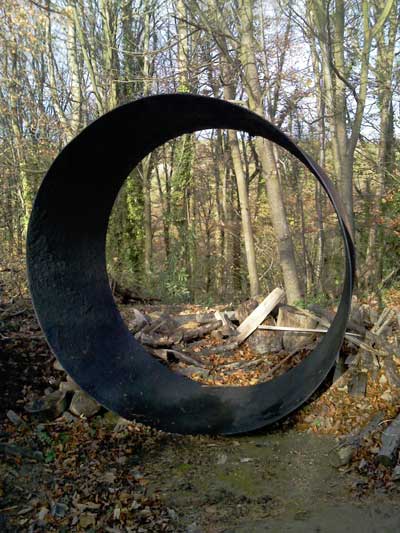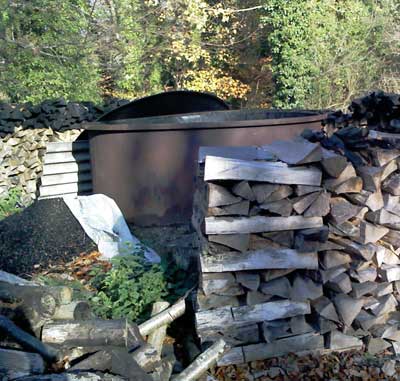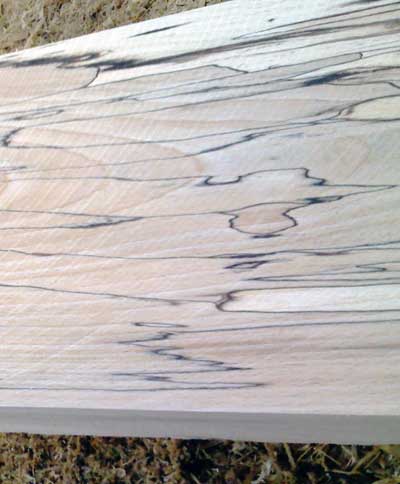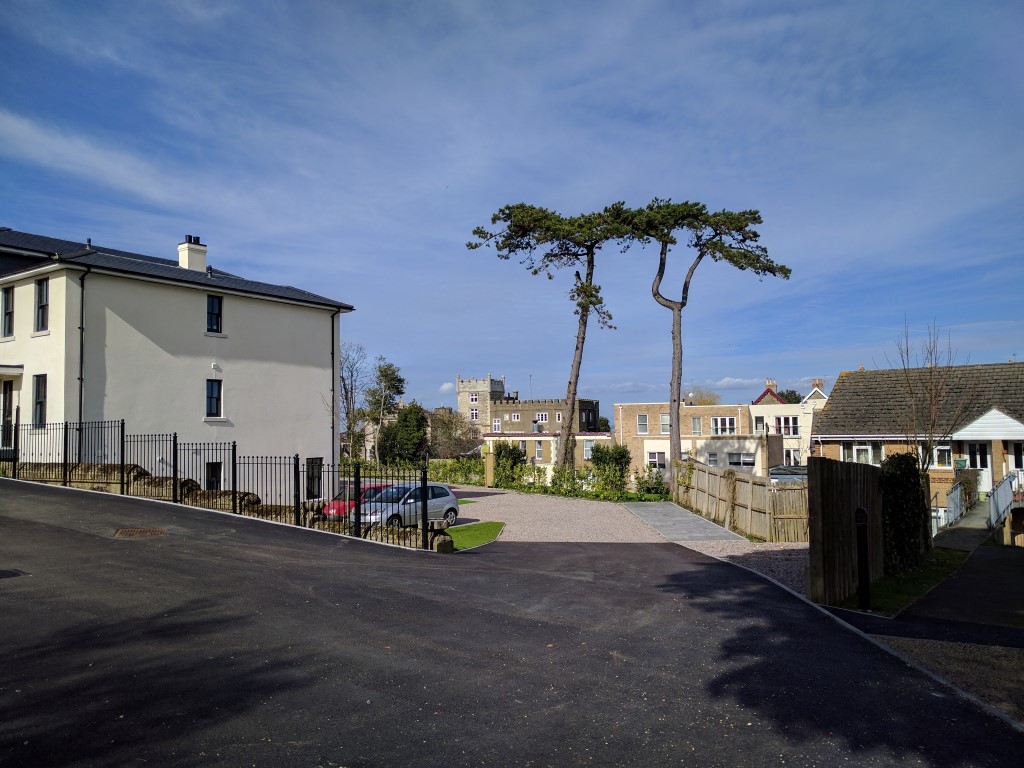Is cutting trees down good for them?
- Complaining about the Mainland - 17th August, 2024
- New island designation – is it just greenwash? - 26th April, 2024
- Police and Crime Commissioners – a solution or a problem? - 21st April, 2024
Walking through the woods recently The Ranger came across this:

Part of a fallen space-station, maybe? Unlikely. The remains of some giant engine? Possibly. Actually, the answer was right there for me to see. The mystery was very soon solved. I was on an outing of the Isle of Wight Woodland Forum, and some generous landowners were allowing the group to visit some private woods and study the ways they were using the land to generate local wood produce. Here at Knighton East Wood local woodman Andy Toms was producing charcoal from the timber he was extracting; and the ‘O’-shaped artefact was a charcoal kiln propped up for storage. Andy had just finished unloading another one after a firing nearby:

The wood is piled up around the kiln to dry out and to provide shelter from the wind. An even burn is essential for good charcoal, and the wind will cause one side to burn faster than the other. Nearby, Andy was demonstrating an impressive mobile sawmill. Such machines are essential tools for small woodland workers, as they allow the woodman to take the machine to the timber source, and not expend effort extracting big logs and transporting them around.

Andy was working on a beech log that had laid in the woods for a while – normally this is something to be avoided, as it can cause the logs to rot. But in this case the sawmill revealed why the woodman was particularly interested in this log: the fungal and bacterial decay in the wood had caused a characteristic banding pattern called ‘spalting’. This ‘spalt wood’, if cut right, is highly desirable for kitchen worktops and other visible uses. Of course, it’s important to catch it before the decay has progressed too far. The plank that Andy cut for the visiting party was just right:

The afternoon finished with a good discussion about woodland management and use of wood for fuel. It’s sometimes surprising that people don’t see the importance of working woodlands in their local area. You won’t have to go far to find somebody keen to plant a tree, but it’s less obvious why they might want to encourage people to cut them down. I remember once working away in an urban woodland, coppicing hazel, only to be challenged by two incensed ladies who accused me of ‘destroying the rainforests’. Actually, when I explained why coppicing is good for the woods and the species that live there, they understood. But it is easy to see how the well-known and emotive images of rainforest trees being felled can make people assume that all tree felling must be bad. So is cutting trees down good for them? Well, paradoxically it can be, if it is done in a sustainable way. This is especially true in the South-East of England where the woodlands have been managed by human input for hundreds if not thousands of years, and many of the species and habitats there depend upon regular woodland management – which usually means removal of some trees. So long as what is removed is replaced by regrowing or replanted trees then the woodland can be worked sustainably for an indefinite time: it is a renewable resource. So if you want to support your local trees, buy some local wood produce such as charcoal, logs or hurdles. By doing so you will encourage woodland owners to manage their woods sustainably; thus ensuing that there will be trees and woods there in the future.

